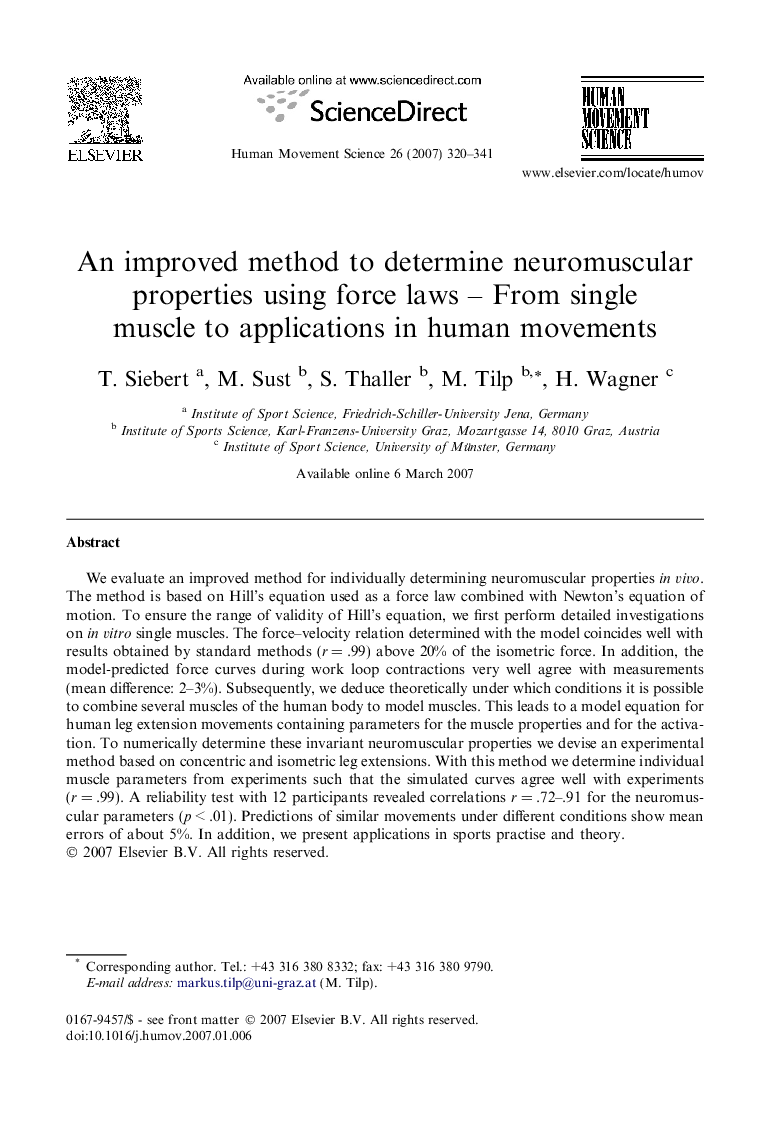| Article ID | Journal | Published Year | Pages | File Type |
|---|---|---|---|---|
| 928945 | Human Movement Science | 2007 | 22 Pages |
We evaluate an improved method for individually determining neuromuscular properties in vivo. The method is based on Hill’s equation used as a force law combined with Newton’s equation of motion. To ensure the range of validity of Hill’s equation, we first perform detailed investigations on in vitro single muscles. The force–velocity relation determined with the model coincides well with results obtained by standard methods (r = .99) above 20% of the isometric force. In addition, the model-predicted force curves during work loop contractions very well agree with measurements (mean difference: 2–3%). Subsequently, we deduce theoretically under which conditions it is possible to combine several muscles of the human body to model muscles. This leads to a model equation for human leg extension movements containing parameters for the muscle properties and for the activation. To numerically determine these invariant neuromuscular properties we devise an experimental method based on concentric and isometric leg extensions. With this method we determine individual muscle parameters from experiments such that the simulated curves agree well with experiments (r = .99). A reliability test with 12 participants revealed correlations r = .72–.91 for the neuromuscular parameters (p < .01). Predictions of similar movements under different conditions show mean errors of about 5%. In addition, we present applications in sports practise and theory.
